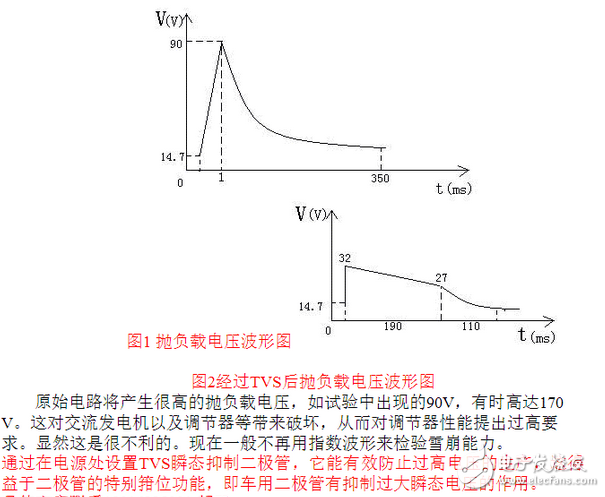The so-called throwing load is that the normal operation of the car alternator suddenly cuts off the load, which is called single throw. When the load is cut off, the battery is cut off again, called double throw. Due to the high reliability of the vehicle operation process, the load-shedding test developed by China must have its inherent rationality.
It goes without saying that the load dump test is a very severe destructive test.
In automobiles, electrical appliances in many places are subject to the impact of load-dumping voltages, such as ignition modules and electronic regulators. For the safety and service life of the car, these critical components must be subjected to a load test of the load-dump voltage. The load dump test of alternators has increasingly become a pilot project of concern. Only modules that can withstand the load dump test can be installed in the car.
The generation and harm of throwing load voltage
The load dump transient voltage generated in the load dump test is mainly generated by the alternator. Including 1 load suddenly disconnected (load single throw)
2 battery suddenly disconnected (battery single throw)
3 load, battery disconnected at the same time (double throw)
4 regulator failed.
In addition to the load-transfer transient voltage caused by the above-mentioned alternator disconnecting the load, other similar transient pulse voltages are often generated in the automotive circuit. All of these common typical transient pulse voltages are listed below (see Table 1). ).
Table 1: Typical transient pulse voltages in automotive circuits

As shown in the above table: There are three main types of transient pulse voltages, namely:
1 Load abrupt transient over-voltage, especially when the alternator is working at full load, suddenly disconnected from the battery. This transient overvoltage can rise to 25~125V in 100 microseconds.
2 The magnetic field attenuates the overvoltage. If the vehicle is stopped, the ignition switch is turned off momentarily. At this time, the self-induced electromotive force generated by the field winding can reach 50~100V and the maximum is 120V.
3 Switching inductive load overvoltage, the inductive load on the car has ignition coil, electromagnetic relay, air conditioning clutch, wiper, motor and electric horn, etc. The highest peak value can reach -300V, and the duration is about 300ms.
The above-mentioned load-transfer transient voltage, like the surge current of a power device, is objectively present, and is an extreme case of frequent, even two-factor (double throw) multi-factor (multiple throw), that is, collectively referred to as fault voltage.
Load dump test solution

Comparison of the original waveform of the load dump and the waveform after the leiditech high power TVS
Guangzhou Ehang Electronic Co., Ltd. , https://www.ehangmobile.com